This article was co-authored by Karen Litzy, PT, DPT. Dr. Karen Litzy, PT, DPT is a licensed physical therapist, international speaker, owner of Karen Litzy Physical Therapy, PLLC, and the host of the Healthy Wealthy & Smart podcast. With over 20 years of experience, she specializes in a comprehensive approach to practicing physical therapy utilizing therapeutic exercises, manual therapy, pain education, and home exercise programs. Karen holds a Master of Science in Physical Therapy and a Doctor of Physical Therapy from Misericordia University. Karen is a member of the American Physical Therapy Association (APTA) and is an official spokesperson for the APTA as a member of their media corps. She lives and works in New York City.
There are 22 references cited in this article, which can be found at the bottom of the page.
wikiHow marks an article as reader-approved once it receives enough positive feedback. In this case, several readers have written to tell us that this article was helpful to them, earning it our reader-approved status.
This article has been viewed 810,481 times.
When you’re feeling back pain, we know that you’re looking for any way to quickly feel relief. Luckily, there are a lot of things you can try at home to help get relief. While there are many causes of back pain, remember that pain levels are not always positively correlated with the degree of seriousness. In other words, minor issues (such as an irritated nerve) can sometimes generate severe short-term pain, whereas life-threatening issues (such as a tumor) sometimes lead to minimal pain.[1] Try some common-sense home remedies and be aware of the signs and symptoms that warrant a trip to the doctor's office.
Steps
Expert Q&A
Did you know you can get expert answers for this article?
Unlock expert answers by supporting wikiHow
-
QuestionHow do you know when back pain is serious?
 Jason Myerson, DPT, DMT, OCS, FAAOMPTJason Myerson is a Physical Therapist and a Certified Orthopedic Specialist. He is affiliated with Performance Physical Therapy & Wellness with clinics located in Connecticut. He serves as adjunct faculty in the Physical Therapy Department at Quinnipiac University. Jason specializes in helping active people get back to hobbies, activities, and sports they love while utilizing an integrated approach to wellness. He holds an MA in Physical Therapy from Quinnipiac University and a Doctorate in Physical Therapy (DPT) from Arcadia University. He is Residency and Fellowship trained in Orthopedic Manual Therapy, achieved a Doctorate in Manual Therapy (DMT) and became a Fellow of the American Academy of Orthopedic Manual Physical Therapists (FAAOMPT).
Jason Myerson, DPT, DMT, OCS, FAAOMPTJason Myerson is a Physical Therapist and a Certified Orthopedic Specialist. He is affiliated with Performance Physical Therapy & Wellness with clinics located in Connecticut. He serves as adjunct faculty in the Physical Therapy Department at Quinnipiac University. Jason specializes in helping active people get back to hobbies, activities, and sports they love while utilizing an integrated approach to wellness. He holds an MA in Physical Therapy from Quinnipiac University and a Doctorate in Physical Therapy (DPT) from Arcadia University. He is Residency and Fellowship trained in Orthopedic Manual Therapy, achieved a Doctorate in Manual Therapy (DMT) and became a Fellow of the American Academy of Orthopedic Manual Physical Therapists (FAAOMPT).
Physical Therapist & Certified Orthopedic Specialist Physical Therapist & Certified Orthopedic SpecialistExpert AnswerBack pain is very common—it occurs in at least 60% of the population at some point in their life, and in most cases, it will go away on its own. However, contact your doctor right away if you experience any numbness, tingling, or progressive weakness in your lower extremities, if you can't stand up, or if you're having any changes in your bowel or your bladder.
Physical Therapist & Certified Orthopedic SpecialistExpert AnswerBack pain is very common—it occurs in at least 60% of the population at some point in their life, and in most cases, it will go away on its own. However, contact your doctor right away if you experience any numbness, tingling, or progressive weakness in your lower extremities, if you can't stand up, or if you're having any changes in your bowel or your bladder. -
QuestionWhat can stop your back from hurting?
 Karen Litzy, PT, DPTDr. Karen Litzy, PT, DPT is a licensed physical therapist, international speaker, owner of Karen Litzy Physical Therapy, PLLC, and the host of the Healthy Wealthy & Smart podcast. With over 20 years of experience, she specializes in a comprehensive approach to practicing physical therapy utilizing therapeutic exercises, manual therapy, pain education, and home exercise programs. Karen holds a Master of Science in Physical Therapy and a Doctor of Physical Therapy from Misericordia University. Karen is a member of the American Physical Therapy Association (APTA) and is an official spokesperson for the APTA as a member of their media corps. She lives and works in New York City.
Karen Litzy, PT, DPTDr. Karen Litzy, PT, DPT is a licensed physical therapist, international speaker, owner of Karen Litzy Physical Therapy, PLLC, and the host of the Healthy Wealthy & Smart podcast. With over 20 years of experience, she specializes in a comprehensive approach to practicing physical therapy utilizing therapeutic exercises, manual therapy, pain education, and home exercise programs. Karen holds a Master of Science in Physical Therapy and a Doctor of Physical Therapy from Misericordia University. Karen is a member of the American Physical Therapy Association (APTA) and is an official spokesperson for the APTA as a member of their media corps. She lives and works in New York City.
Physical Therapist
-
QuestionHow can I prevent a bulging disc?
 Karen Litzy, PT, DPTDr. Karen Litzy, PT, DPT is a licensed physical therapist, international speaker, owner of Karen Litzy Physical Therapy, PLLC, and the host of the Healthy Wealthy & Smart podcast. With over 20 years of experience, she specializes in a comprehensive approach to practicing physical therapy utilizing therapeutic exercises, manual therapy, pain education, and home exercise programs. Karen holds a Master of Science in Physical Therapy and a Doctor of Physical Therapy from Misericordia University. Karen is a member of the American Physical Therapy Association (APTA) and is an official spokesperson for the APTA as a member of their media corps. She lives and works in New York City.
Karen Litzy, PT, DPTDr. Karen Litzy, PT, DPT is a licensed physical therapist, international speaker, owner of Karen Litzy Physical Therapy, PLLC, and the host of the Healthy Wealthy & Smart podcast. With over 20 years of experience, she specializes in a comprehensive approach to practicing physical therapy utilizing therapeutic exercises, manual therapy, pain education, and home exercise programs. Karen holds a Master of Science in Physical Therapy and a Doctor of Physical Therapy from Misericordia University. Karen is a member of the American Physical Therapy Association (APTA) and is an official spokesperson for the APTA as a member of their media corps. She lives and works in New York City.
Physical Therapist As far as I know, you can't. Bulging discs are just one of those things that happen naturally over time. If you took 20 people off of the street and gave them an MRI, you would probably find 4-5 bulging discs and those people wouldn't even know. It's not necessarily a dangerous thing on its own, but the more you can move around, the better.
As far as I know, you can't. Bulging discs are just one of those things that happen naturally over time. If you took 20 people off of the street and gave them an MRI, you would probably find 4-5 bulging discs and those people wouldn't even know. It's not necessarily a dangerous thing on its own, but the more you can move around, the better.
Warning
- See your doctor immediately if you experience any of the following signs or symptoms: quickly escalating severe back pain, loss of bladder and/or bowel control, weakness in your arms or legs, high fever, sudden unexplained weight loss.
References
- ↑ http://www.mayoclinic.org/diseases-conditions/back-pain/basics/causes/con-20020797
- ↑ http://umm.edu/programs/spine/health/guides/anatomy-and-function
- ↑ http://www.mayoclinic.org/diseases-conditions/spinal-cord-injury/basics/symptoms/con-20023837
- ↑ http://www.nlm.nih.gov/medlineplus/ency/article/002119.htm
- ↑ https://www.uofmhealth.org/health-library/hw47901
- ↑ https://www.health.harvard.edu/pain/hot-or-cold-for-back-pain
- ↑ https://www.webmd.com/a-to-z-guides/epsom-salt-bath
- ↑ http://www.mayoclinic.org/diseases-conditions/back-pain/basics/treatment/con-20020797
- ↑ http://www.muscleandfitness.com/workouts/workout-tips/foam-rolling-total-body-benefits
- ↑ Karen Litzy, PT, DPT. Physical Therapist. Expert Interview. 27 August 2020.
- ↑ http://www.nhs.uk/Conditions/Back-pain/Pages/Treatment.aspx
- ↑ https://pubmed.ncbi.nlm.nih.gov/29861215/
- ↑ http://www.mayoclinic.org/tests-procedures/acupuncture/basics/definition/prc-20020778
- ↑ http://www.mayoclinic.org/diseases-conditions/back-pain/expert-answers/acupuncture-for-back-pain/faq-20058329
- ↑ http://www.apta.org/StateIssues/DryNeedling/ResourcePaper/
- ↑ http://www.mayoclinic.org/diseases-conditions/back-pain/basics/alternative-medicine/con-20020797
- ↑ https://www.nccih.nih.gov/research/blog/mindfulness-meditation-reduces-pain-bypasses-opioid-receptors
- ↑ https://www.webmd.com/balance/news/20110406/meditation-may-reduce-pain
- ↑ http://www.mayoclinic.org/diseases-conditions/back-pain/basics/causes/con-20020797
- ↑ http://www.spine-health.com/treatment/physical-therapy/physical-therapy-benefits-back-pain
- ↑ http://www.mayoclinic.org/tests-procedures/cortisone-shots/basics/definition/prc-20014455
- ↑ http://www.niams.nih.gov/health_info/back_pain/back_pain_ff.asp
- ↑ http://www.orthop.washington.edu/?q=patient-care/articles/arthritis/back-pain.html
About This Article
Bad back pain can make it hard to do anything, but fortunately there are some simple things you can try at home to relieve your pain. Try taking a warm bath for 30 minutes to reduce pain and swelling. Add Epsom salts for even more pain relief. You can also lie on the ground with a tennis ball or foam roller under your shoulders and move slowly up and down to massage your back. Sleeping with a bad back can be hard, so try sleeping on your side or on your back with a pillow under your legs to take the pressure off your back joints. For more tips from our Chiropractor co-author, including how to improve your back pain with exercise, read on!
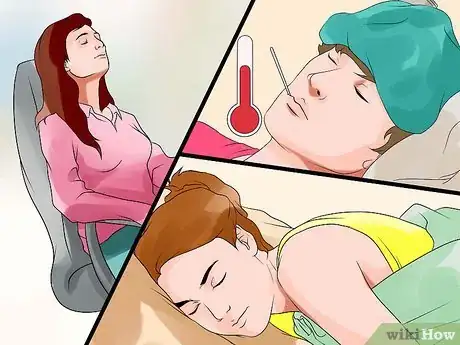
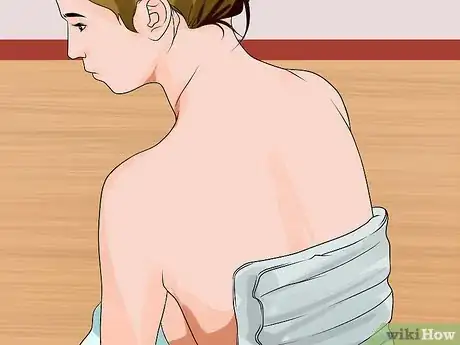
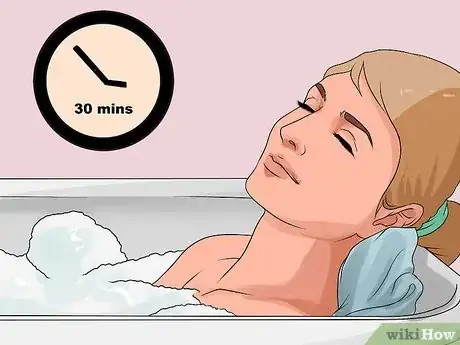
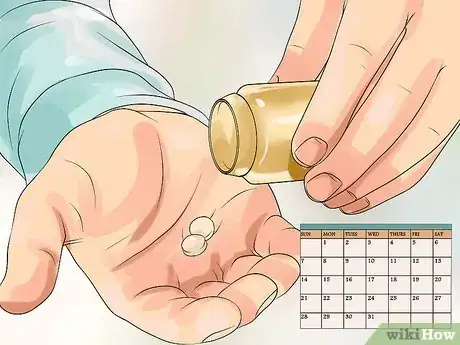
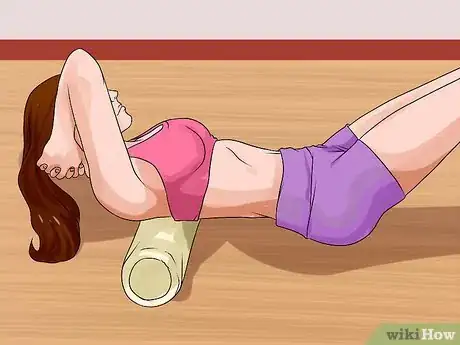
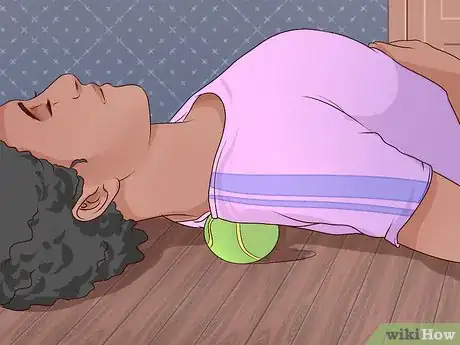
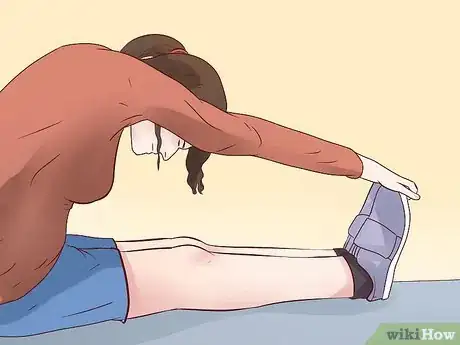

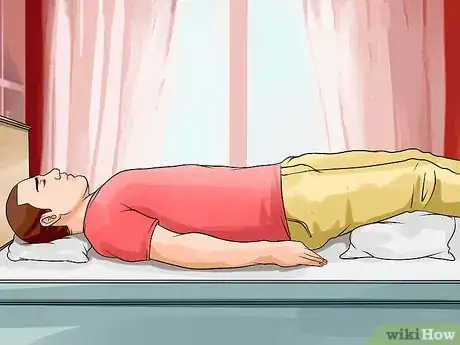
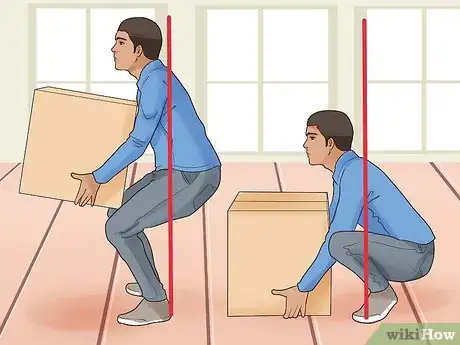
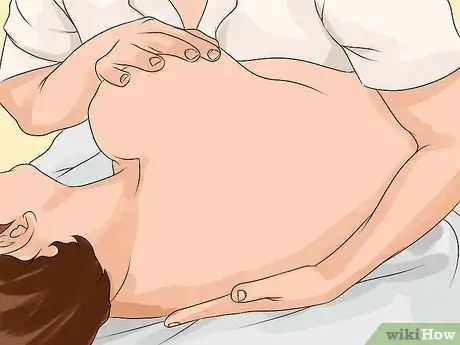
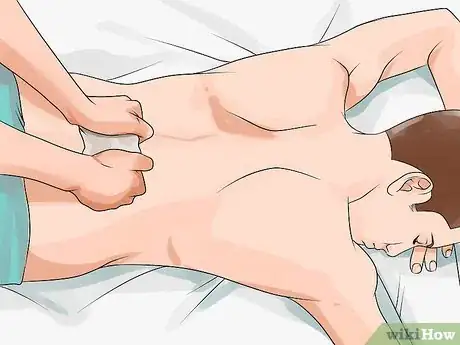
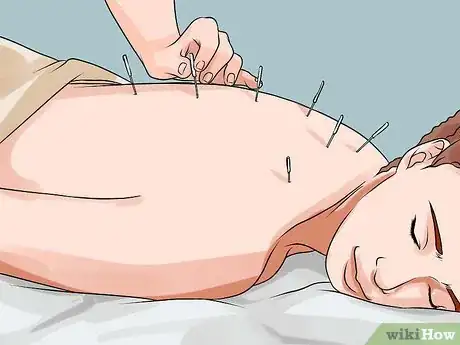
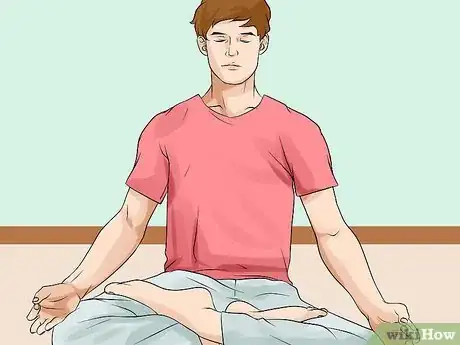
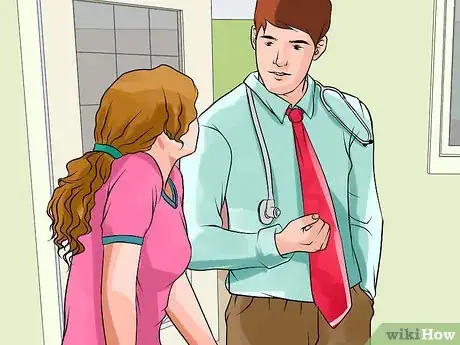
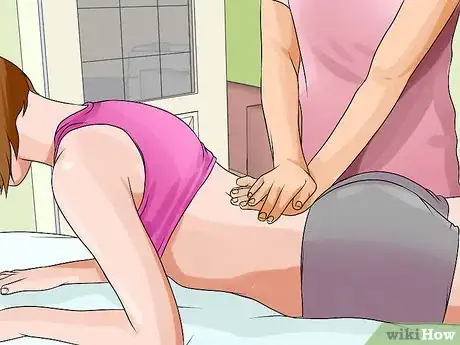
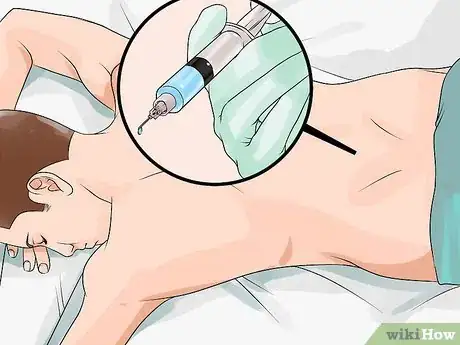
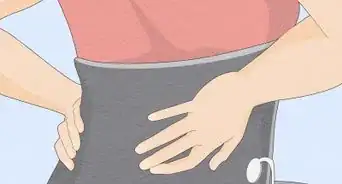
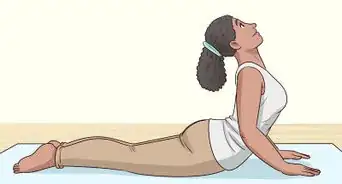

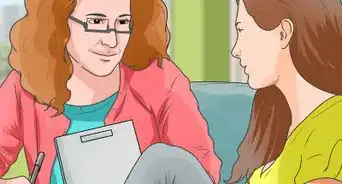
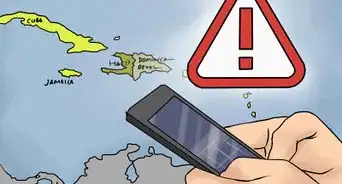
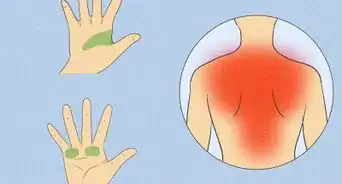
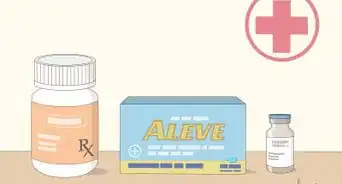
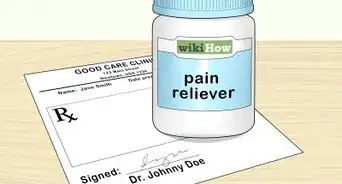
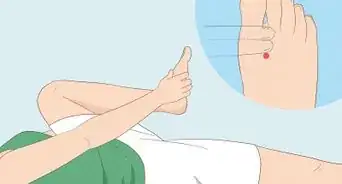
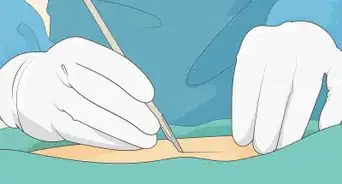
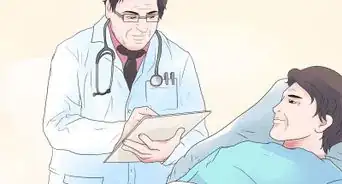
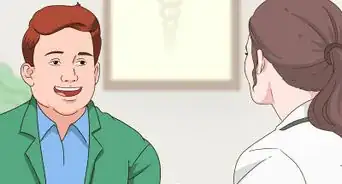
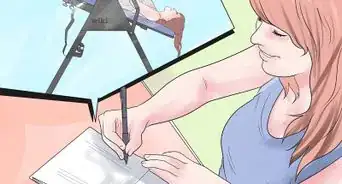
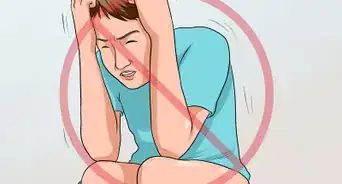








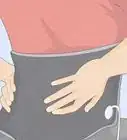
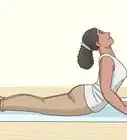





































Medical Disclaimer
The content of this article is not intended to be a substitute for professional medical advice, examination, diagnosis, or treatment. You should always contact your doctor or other qualified healthcare professional before starting, changing, or stopping any kind of health treatment.
Read More...